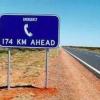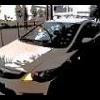Search the Community
Showing results for tags 'population'.
-
Source: http://sbr.com.sg/economy/news/top-4-secto...ming-population
- 53 replies
-
Singapore gearing up for 6 Million population despite infrastructure adequacy in question as well as skyrocketing property prices, and other social issues. Questions unanswered, yet. --- --- TODAY
- 38 replies
-
From CNA: http://www.channelnewsasia.com/stories/sin...1236698/1/.html SAF uses technology to counter lower birth rate & ageing population By Imelda Saad | Posted: 12 November 2012 1429 hrs SINGAPORE: The Singapore Armed Forces (SAF) has been affected by Singapore's declining birth rates and ageing population. National Service (NS) enlistees are drawn from eligible male Singapore citizens and permanent residents. In a reply to Parliament, Defence Minister Ng Eng Hen said in the 1990s, about 15,000 NS men were enlisted into the SAF each year. From the year 2000, Singapore experienced higher numbers as children given birth by cohorts of baby-boomers came of enlistment age, including those born in the 1988 Dragon year. As a result, SAF enlistments increased and reached a peak of about 21,000 in 2011. But going forward, due to an ageing population and declining fertility trends, SAF enlistments are expected to gradually taper and revert to levels in the 1990s, of about 15,000 each year. But even with these enlistment numbers, Dr Ng said Singapore's long-term projections till 2040 indicate that the SAF will still be able to mobilise about 300,000 soldiers from regulars, full time national servicemen (NSFs) and operationally ready NS men (ORNS), if needed. Dr Ng added the SAF has taken into account its manpower requirements over the long term through its transformation towards a 3rd-generation SAF. That is, through advances in technology and with more effective systems and platforms, which require fewer men to operate. Dr Ng said: "Beyond investing in technologically advanced platforms, we also leverage technology to network our platforms together to provide us greater synergy in training and operations. "So one example is the recently inaugurated community for command, control, communications, computers, and intelligence. Another important factor driving up the overall capability and productivity of the SAF lies in the rising quality of our servicemen." "As a whole, the higher quality of our NS men combined with the advanced platforms and effective use of technology to network our systems, will ensure that the SAF continues to be an effective military force and a strong deterrent against any aggression," he added. - CNA/xq
-
and we are now 'learning from HK' on the urban planning matter. are we not capable, have we too many undesired flops? or we are well on top of our game? or neither? --- Senior civil servants to discuss population and healthcare issues with Hong Kong counterparts Singapore Permanent Secretaries are in Hong Kong SAR from 5 to 6 November 2012 to discuss population, ageing and healthcare issues. This is the fourth year public sector leaders from the two Civil Services are meeting to exchange views and experiences on issues of mutual interest. Leading the six-member Singapore delegation is Mr Peter Ong, Head of the Singapore Civil Service. The delegation will be hosted by Mr Raymond Wong, Permanent Secretary for the Civil Service and the programme will involve engagements with 11 Hong Kong Permanent Secretaries and other senior officials. During their visit, the Singapore delegation will call on Mrs Carrie Lam, Chief Secretary for Administration and Mr Paul Tang, Secretary for the Civil Service. They will also be visiting the City Gallery to learn about Hong Kong
-
- 146 replies
-
- Singapore
- population
-
(and 2 more)
Tagged with:
-
already talking about next two decades, apparently a masterplan has been drafted out. wonder if i would still fit into the workforce. --- 25 Sep 2012 CATEGORY Growing our Economy Ministry of Trade and Industry Occasional Paper on Population and Economy Singapore is located in a fast growing region
- 4 replies
-
- Occasional
- Paper
-
(and 2 more)
Tagged with:
-
Okay... since you ingrates are complaining about overcrowding.... let's do this as part of population control!!
-
I despair after hearing about the furore about COE prices appearing on papers, internet and TV. This is not rocket science, and after many years of trial and error, no one has got it right. The politicians in charge are very worried since the poor showing in the previous elections, and the turmoil brewing on the widening rich-poor gap. As a developed country, there is a need to address the rich-poor gap, human rights, equality, environmental wellness, traffic conditions, and public transportation. The system of COE, ARF, Road Tax, does nothing but line the treasury coffers, hence certain political party got the nickname Pay and Pay. The impending carbon emission tax rebate/charge is a welcomed change however, there is no need for such a complex rule to implement. Vehicles that are modified after sales, or poorly maintained will still produce more carbon than it should. Different driving styles and road conditions will also change the carbon emission by a big margin. We often see many drivers leaving their engines on while idle, how are you going to charge that? There are simple and effective solutions which do not cost a bomb to implement and will also satisfy the lower income group, vehicle sales market, environmental concerns, improved public transport and traffic. 1) Drop the COE - they are not effective. 2) Drop the ARF - no difference from the COE, just another tax that is not effective. 3) Drop the Road Tax - it is not a fair representation of road usage, carbon emissions. 1) Increase fuel prices - you use, you pay simple. No need for satellite tracking, ERP gantries. If the vehicle has high emissions, it will consume the relative fuel. If you can't afford to pay for fuel, you won't drive much. 2) Increase Parking charges - you use, you pay simple. Existing infrastructure, no need to change anything. If you cannot afford parking, you will not drive to the place. If the carpark is at it's maximum capacity, they can command higher premiums. If people cannot afford to park, they would not buy a car. 3) Cars are sold on OMV only, lower income group can afford cars. They have the freedom to use it but of course there's a premium to pay to use it. They can find cheaper parking lots with less demand. 4) Fuel tax, ERP, and parking fees will give the same amount to the treasury, there is no impact. 5) Use taxed funds to support public transport to reduce cost of operation and improve efficiency, not just adding monies to the reserve. It's public transport, the governing body of the public should contribute, not let it be run by "private operators" who are only concerned of profits. These results in a fair vehicle system, everyone has a fair chance to purchase vehicles on their market price, less usage, less payment, leading to less traffic, less emissions. Those who can only afford public transportation will enjoy cheaper and more efficient system.
- 15 replies
-
- many
- politicians
-
(and 4 more)
Tagged with:
-
More immigrant FTs.... hurray!
- 25 replies
-
- Singapore
- population
-
(and 3 more)
Tagged with:
-
Some interesting stats. Population by town
- 27 replies
-
- Singapore
- population
-
(and 1 more)
Tagged with:
-
If you are the Transport Minister and you have total and full control of road matters, how will you control the car population? For me, i think it will simply have to be a painful increase in ERP, COE and road tax.
-
An old article I came across in another forum. My apology if this has been posted before. Bernie Madoff's recent Ponzi scheme has drifted out of the world
- 6 replies
-
- Population
- Growth
- (and 4 more)
-
The allowable growth rate was cut from 3% to 1.5% back in 2009. The 1.5% growth rate will be due for revision for 2012 onwards. What is your take on the new growth rate? increase? stay the same? decrease? My view is decrease..maybe to 1% or lesser.
-
Everyone complain about the high COEs prices and overpopulated car ownerships in Singapore, but there seems to be no solutions. I hate people who likes to complain but offer no solutions. So I propose some ideas of mine.. 1. COE. Scrap the current, all successful bidders will pay the minimum COE price for that bidding. New changes, for example, there are 1000 COEs but 2000 bids for them. So 1000 successful bids will pay the COE prices accordingly to what they have bidded. Some will pay few dollars for their COEs while some will pay tens of thousands for their COEs. This will keep the COE prices in check. 2. One household/address can only own 1 car. If within that same household/address, want to own a 2nd car or third car, can.. For the 2nd car, pay 1.5 times the price of the more expensive car. The 3rd car, pay 1.75 times. 4th, pay 2 times. Of course you may say, register the address to another address, where there is no car ownership, can.. no problem, just pay $$$ to keep the bugger from exposing the deed. But when dealing with $$$, sure will have some arguments and most likely will kenna exposed.. Thanks for reading, how's my solution to the overpopulated car ownership in Singapore?
- 195 replies
-
bla bla bla... ...some analysts say the population must continue to grow, otherwise the housing market will risk an oversupply situation in the next three years... bla bla bla http://www.channelnewsasia.com/stories/sin...1130711/1/.html what you guys think?... there are some major grey area here...
-
1. Total Population = 2010 (Census) - 5,076,700 (source: Department of Statistics Singapore) 2. Eligible Voters = 2,311,582 Singaporeans (Source: Eligible Voters Therefore , which is about 45.5% of total population..... so beside those below 21 years old..... what are the others ? So many foreigner ? What's your view?
-
Many in this forum or elsewhere (as long as you live in Singapore) are discussing about the spike in COE premium over the last one year. I aim to provide a reality check on COE and car population control and well as how public transport can play a part in the overall transportation system and cost. First the COE demand and supply situation. Please look to year 2009 March bidding. There were 3682 COE available (for month of March) for 1.6l and below cars. COE price was $3864 and $3162. That was the time whereby all in Singapore who wants to buy a car and think that they can afford it and willing to pay for it at the OMV plus taxes plus dealer profit plus $3800 did so. That was the time whereby almost all demand were fulfilled by supply. Coming back to present, if we were to satisfy all demand for new cars (1.6l and below) in current economic climate, the COE available numbers could by more than double that of March 2009, that works out to be ~8000 new 1.6l and below cars a month. Compared to the 1300 available COEs available for december, this works out to 6700 new car owners want to be who cannot fufill their dreams of owning a new car. This is how COE works. How do you get the 1300 who are willing to pay $50k for a COE to work with the 6700 who doesn't want to pay $50k to work together so that somehow a newly defined batch (be it through balloting or means testing or lottery) of 1300 gets their COE at $1? You will need to issue 8000 new COEs to enable all 8000 new cars owners wannabe to get their COE at $1. Think about it, COE works by limiting the number of new cars allowed on the roads according to what the LTA wants. It taxes the car owners for wanting a new car. This method works for car population control. We should however be asking how we can maximise the returns on the taxes that we collect from new car owners. How to make public transport better such that those who are deprived of car ownership because being less well-off or less willing to pay taxes do not suffer disproportionate disadvantage from not owning private transportation. Secondly, the train system can play a very deciding role in determining the private car ownership and usage situation in Singapore. I think this thread title is a good platform for everyone to discuss about car ownership or the lack thereof. This is my second posting in this thread regarding how our train infrastructure should be before motorist starts giving up their private transport on weekdays. The public transport frequency, comfortable load carrying capacity and coverage (trains) must be improved on tremendously. COE can be as high as $200 or $500K. Singaporeans will not care if the public transport is affordable, comfortable, punctual and has extensive coverage. Taxes from COE should be used to build public transport infrastructure to a truly first class status. The circle line is 8 years late. The east to north line (Changi/Pasir Ris/Tampines to Yishun/Woodlands) should have been completed in 2009. The second east west line should have started work in should be completed in 2012. The second North-South line should be completed in 2014. A third North-South Circle line should be in planning and work to start in 2012. Jurong Island and Tuas should have been served by the MRT line in 2007. Palau Bin and Tekong MRT station should have been completed in October 2010. Train carrying capacity can be increased by a double deck MRT track that runs express service from major MRT stations, example Tampines to Tuas stopping only at Tampines, Payer Lebar, Raffles Place, Buona Vista, Jurong East, Boonlay and Tuas. The double deck MRT system should have been ready in 2010. Planned tracked should have 4 track rail to enable express trains. LRT should serve every MRT station to bring commuters to within 300m of 95% of residential high-rise and 500m of offices and other residential buildings. A system like the above serves a population of 6.5million comfortable with the desirable effect of such extensive rail system is that most Singaporeans would prefer to travel on public transport and the number of cars on the road can be drastically reduced through even further cuts on issuance of COE.
-
no talk of coe no talk of erp. zilch. everyone gets a equal chance whether you are rich or not. also limits the 'immigrants' access to a car etc. who says you need money to control the car population... what do you guys think?
- 25 replies
-
NEW car sales slowed by nearly 30 per cent last year on the back of a big cut in COE supply. According to Land Transport Authority data, 68,862 new cars rolled off showroom floors last year, 29.3 per cent fewer than in 2008 and the lowest number in seven years. But because far fewer cars were scrapped or exported, the car population grew despite the drop in sales. Car numbers rose by 4.8 per cent to 566,608 by end-December, busting the Government's 1.5 per cent growth cap. Overall, the vehicle population inched upwards by 3.4 per cent to 925,518. Car owners have put the brakes on buying - choosing to hold on to their current vehicles - in recent years. Reasons include the financial turmoil that gripped the world from the second half of 2008 to late last year, as well as the huge loans that many had incurred on cars between 2003 and 2008. As 80 per cent of cars here are below four years old, dealers said there is naturally a lower demand for replacements, which in turn reduced the supply of certificates of entitlement (COEs). Related links: Top 10 Selling Brands This contrasts with sales only 10 years ago when Singapore motorists were trading in their vehicles which were as new as two years old. COE supply is largely determined by the number of vehicles taken off the road. Based on this factor, supply this year is expected to dip again. 'I think the quota will be cut by at least 15 per cent,' said Mr Neo Nam Heng, president of the Automotive Importers and Exporters Association. He said the fact that the car population grew despite a 29.3 per cent shrinkage in COE supply last year is a clear sign that the quota could be reduced further. But other motor traders said determination of the supply must be tempered by the fact that the demand for replacement vehicles could accelerate in the near future. Mr Ron Lim, general manager of Nissan agent Tan Chong Motors, said: 'When the economy really picks up, those with four-, five-, six-year-old cars will come back onto the market with a vengeance. And there could be a real shortage of COEs then.' The Government said last year that it was reviewing the formula by which COE supply is determined. It is expected to announce a new formula soon. Last year's sizeable shrinkage in the quota has led to fierce competition among motor firms, a trend that is likely to escalate this year. Toyota agent Borneo Motors was first off the block when it cut $6,000 off its Corolla and Vios tags over Christmas. The offer is good till Jan 20. Rivals have responded, but Mazda Singapore is probably the most aggressive. It slashed about $8,000 off its Mazda 3 cars, bringing the price to $65,600. 'This is below cost,' said Mazda Singapore marketing manager Philip Lu. 'But we have no choice. We have to fight the market.' Meanwhile, Borneo Motors secured Toyota's pole position in the sales race for the seventh year running in 2009 with 13,419 cars sold. Hyundai followed as a distant second, with 6,628 units. Volkswagen made it to the top 10 bestsellers' list for the first time by doubling sales to 2,421 units. But the brand that chalked the biggest growth in the list was Kia - up 116 per cent to 4,299 cars. Mercedes-Benz and BMW remained the only luxury brands in the top ranking. A star performer in the super high-end segment was Lamborghini, which outsold Ferrari once again. It sold 50 cars, versus 32 Ferraris. Lamborghini Singapore managing director Melvin Goh, however, played down his triumph, saying: 'It was a walkover because Ferrari had a change of dealership last year, and there were no cars from the factory for a while.' Mr Goh nevertheless expects to match last year's sales this year. source http://motoring.asiaone.com/Motoring/News/...118-192523.html
-
- population
- despite
-
(and 2 more)
Tagged with:
-
http://www.straitstimes.com/Latest%2BNews/...ory_161950.html ok... that doesnt sound too promising for the locals here.
- 50 replies
-
- Foreign
- population
-
(and 3 more)
Tagged with:
-
4.99mil Citizen: 3.2m PR: 0.53m Foreigners: 1.25m http://www.channelnewsasia.com/stori...007789/1/.html 3/5, we must cherish our fellow country mates soon there will be no more true blue sporean [grouphug]
-
Bored and Found something on onemotoring. Perhaps Im a bit suaku.... LTA Some facts: 1. 550k cars (excludes buses etc) in SGP as of end 2008. Gosh. 2. the top 3 take up more than 50%. i.e. every other car is a Toyota/honda/nissan. 3. 1 in 12 cars is a BM/Merc. That seems a bit low. 4. there are more BMWs than Subarus. I honestly thought there were alot more subarus......
- 13 replies
-
- Total
- Population
-
(and 1 more)
Tagged with:
-
Car numbers up despite driving costs That's because fewer cars have been scrapped, say traders By Christopher Tan, Senior Correspondent The LTA says part of the accelerated growth was because it had over-projected the number of cars expected to have been taken off the road this year. This would be corrected at a regular review next month. -- ST PHOTO: FRANCIS ONG SINGAPORE's car population continues to rise, although higher fuel prices, parking charges and road tolls were expected to have put the brakes on growth. According to the Land Transport Authority (LTA), there were 539,540 passenger cars here at the end of last month - 8.1 per cent more than at the same time last year. In fact, the rate of growth is second only to last year's record 9 per cent expansion over the 2006 population. And this is despite the supply of certificates of entitlement (COEs) this year shrinking by 8.3 per cent, petrol prices rising by 30 per cent, overall parking charges climbing by more than 10 per cent and more than 20 new Electronic Road Pricing (ERP) gantries coming up. Motor traders reckon the reason for the phenomenon does not lie in new cars, but in far fewer cars being taken off the road to be scrapped or re-exported. Between January and last month, an average of 5,190 cars were taken off the road a month - 12 per cent fewer than during the corresponding period last year. On the other hand, this year's COE supply provides for 6,388 cars to be scrapped or re-exported a month - or 23 per cent more than the actual numbers removed. Automotive Importers and Exporters Association president Neo Nam Heng said: 'This has led to too many COEs, and too many new cars added to the road network.' An LTA spokesman admitted that part of the accelerated growth in the first seven months was because it had over-projected the number of cars expected to have been taken off the road this year. He said this would be corrected at a regular review next month. Several motor traders expect COE numbers to shrink sizeably for the six months starting from October. Said Jardine Cycle & Carriage chief executive (motors) Cheah Kim Teck: 'There will be a cut so that the supply is more closely aligned with the actual numbers scrapped.' He estimated that this year's car COE numbers should hover between 80,000 and 85,000 - instead of the 96,200 allotted. Mr Neo expects COE supply to be reduced by 20 per cent from October. But others think that reductions will be made in smaller steps. They point to the LTA's statement made earlier this year that the annual growth rate of the vehicle population it allows would be halved to 1.5 per cent from next year - from 3 per cent a year since 1990. Another reason not to react too drastically to the growing car population is the fact that motorists may be driving less. Signs of this include: [*]Fuel sales shrinking by 2.2 per cent to 3.916 million barrels in the first half. [*]Daily public transport ridership hitting a record 4.8 million rides in the first quarter. [*]Anecdotal evidence that it is now easier to find a carpark lot in the city. Observers said these show that the Government's move to lower upfront car taxes but raise levies based on usage, such as ERP charges, is working. Businessman Leslie Chia, 43, said: 'I still drive, but I plan my route a lot more carefully.' [email protected] http://www.straitstimes.com/Singapore/Stor...ory_272667.html
-
Hi bros, what type of cars do you own? Notice that this thread allows multiple answers. So you may select both OPC and normal plate cars if u own both. This poll serves as an estimate of the ratio. =)
-
Home > ST Forum > Story July 7, 2008 I AM confused and annoyed by policies affecting car ownership in Singapore. As a motorist, I am of the view that there are more and more cars on the roads nowadays, so the Government has to set up more Electronic Road Pricing (ERP) gantries and raise ERP rates to control traffic. My question is simple. What happened to the original purpose of the certificate of entitlement (COE)? Isn't it supposed to be the ultimate tool to limit the number of cars on the road? If the COE is doing its job well, why are the roads so choked that the authorities have 'no choice' but to set up ERP gantries everywhere to control traffic? Let's see what went wrong. First, for the past few years, the number of COEs grew, and car prices tumbled to a low five-figure sum. Second, car loans stretched to 10 years, with banks and dealers offering cash-back deals and zero downpayments. Third, additional registration fee taxes were reduced. The road tax has also been lowered. Simply put, the measures made cars cheaper and many people flocked to buy them - and many of those shouldn't own a car at all. I estimate at least half the car owners today earn less than $5,000 a month. Why are they buying a car? With ever-increasing oil prices and inflation, one will soon need to pay more than $1,500 a month for a small Japanese car, including loan instalments, petrol, maintenance and repair, parking, road tax, insurance and so on. And now, the new scheme will allow cash rebates to scrap cars, in order to turn drivers back to public transport. This is not wrong, but we are not using the system correctly. In the first place, we should make it very difficult to own a car, but we are doing the exact opposite by making it easy for people to own a car and subsequently 'converting' them back to public transport. This is moving one step forward and two steps back. Asking a car owner who has been driving for a decade to convert back to taking buses is like asking someone who is used to getting water from the tap to fetch water from a well again. A better solution is to limit car loans to five years, with a minimum 50 per cent downpayment. This will weed out thousands of people who can ill-afford a car. And yes, make the COE useful again by releasing fewer of them. Tan Wee Liang














